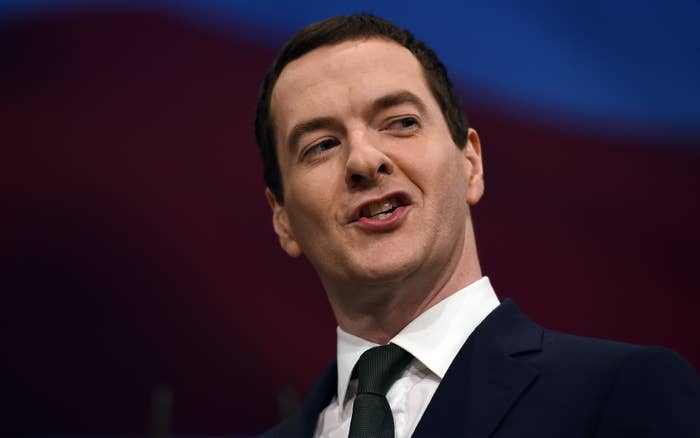
George Osborne has promised to "lessen" the impact of his tax credit cuts after being dealt an embarrassing double blow by the House of Lords. Labour and Liberal Democrat peers defeated the Tories twice on Monday night over the cuts, which could see 3 million families lose an average of £1,000 a year.
In the House of Commons on Tuesday, the chancellor said he would stick to his cuts – which aim to save £4.5 billion a year – but also pledged to "lessen the impact on families during the transition". He will set out details in his autumn statement on 25 November.
The Resolution Foundation think-tank, which campaigns on behalf of low-paid workers, said Osborne had three main options.
1. Don't cut so much
The "most straightforward option" available to the chancellor is simply not to slash tax credits by quite so much. If Osborne halved the savings to £2.2 billion, he would reduce the average loss for families to under £700.
Under Osborne's plans, the income threshold for working tax credits and child tax credit – the point at which someone starts to lose the benefit – would be cut from April.
The threshold for working tax credits is being reduced from £6,420 to £3,850, so as soon as someone earns £3,850, they will see their payments reduced. The income threshold for those only claiming child tax credit is being cut from £16,105 to £12,125.
Torsten Bell, director of the Resolution Foundation, said Osborne should ease these cuts to the income threshold. "This cut not only hits poorer households harder, but also leads to a major reduction in the rewards to going out to work in the first place," he said. "Undoing some of that damage would allow George Osborne to say he was prioritising working households on the lowest incomes."
2. Phase in cuts over a longer period
Osborne could "phase in" the tax credit cuts over time, so families avoid a "large overnight hit" to their incomes in April. This approach would be similar to the real-terms cuts to most working-age benefits during the last parliament, with below-inflation rises every year.
But it would be more difficult for families because it would mean actual cash cuts rather than slower rises. Bell said: "Governments tend to not phase in cash cuts of this nature because the political pain is dragged out."
3. Protect existing tax credit claimants
This option would limit the tax credit changes to new claimants only. This "transitional protection" means that a relatively small number of people are initially affected, but they're affected by a big amount.
This is effectively the measure, introduced by Labour's Baroness Hollis, that peers backed in the House of Lords on Monday night. She called for a delay to the cuts pending "full transitional arrangements" to ease their impact for at least three years. "Essentially, the cuts would apply to new claimants only," she said.
According to the Resolution Foundation, the move would mean no one would face a year-on-year cash loss – but it would be expensive because many families claim tax credits over several years. It would also give existing claimants an incentive not to increase their hours, because they could stop getting tax credits and then would lose out if they claimed again in future.
Bell said the Treasury may well opt for "a combination" of all three options.
"Which you think is preferable will depend on how you balance off the costs to the exchequer with the hit to family budgets, and whether you think the problem with these changes is the timing of the losses, or the sheer scale of them," he said. "In 29 days we’ll find out which the government cares about more."
